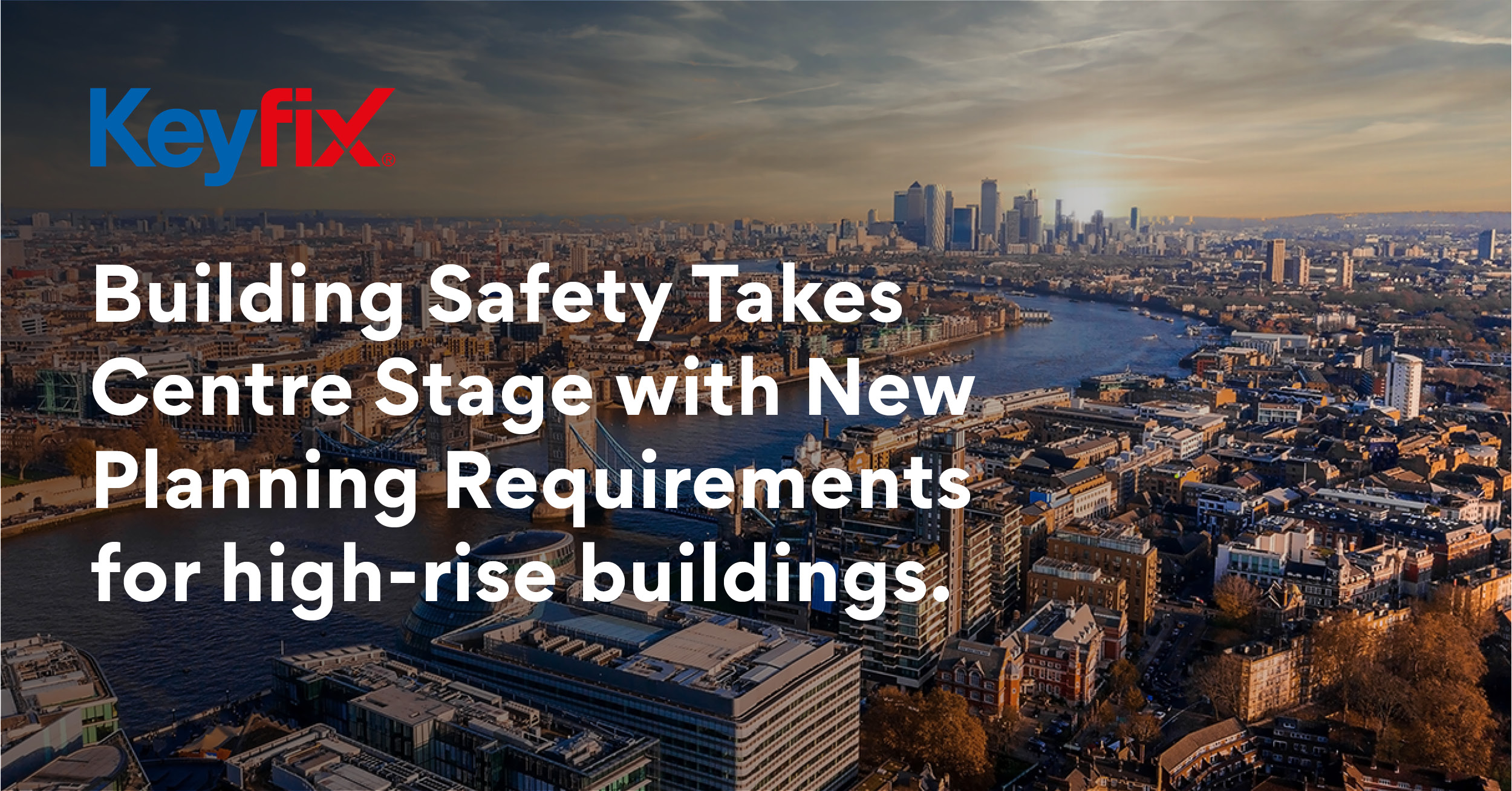
Champions of Best Practice

Posted on 07 Sep 2021
Read Keyfix Managing Director, John Duffin’s latest blog on Planning Gateway One and how this new planning requirement will mean implementing fire safe design at the earliest stage of a project’s development.
“With the new planning requirements on fire safety for high rise residential buildings having come into force on August 1st, the importance of considering fire safe design at the earliest stage of a project’s development has once again come under the spotlight. Ensuring fire safety is prioritised at every stage of a project’s development is paramount. But what does this mean for construction product manufacturers and what role can we play in the creation of safe and resilient buildings?
The new requirements, referred to as Planning Gateway One, apply to buildings over 18 metres in height and come in the wake of the Grenfell tragedy and Dame Judith Hackitt’s Independent Review of Building Regulations and Fire Safety. Her report highlighted the need to transform the building safety regime and recommended minimum requirements around fire safety be addressed before planning permission is granted.
The Grenfell tragedy focused attention on fire safety, from accountability to industry competence and the use of critical products. It’s why fire safe design clearly should not be an afterthought with Planning Gateway One; the first of a series of ‘gateway points’, requiring high-rise developments consider fire safety at the earliest stages of planning. The intention is it will result in schemes that fully integrate thinking on fire safety. In short, high-rise developments will need to demonstrate they have been designed with fire safety in mind before planning permission is granted.
While these planning reforms are needed post-Grenfell, it’s a shame it took a tragedy such as Grenfell to force a fire strategy into early design thinking. Surely, this should form part of early discussions and be essential for all building types not just high-rise residential? Although not currently in scope, it is expected that hotels and care homes will at some point form part of the discussion. Fire protection is essential for all building types if we are to create a resilient built environment.
In response to these changes, and the ban on combustible materials in some buildings over 18 metres in height, manufacturers have been forced to look at whether or not their existing products conform to new regulations. This has seen many being forced to change their products or move away from the high rise market altogether. It has also provided an opportunity for innovation, and Keyfix is testament to this.
This innovation has created a range of new products and solutions that are specifically designed to meet and exceed the regulatory requirements . As part of this Keyfix has developed a unique and commercially viable, rapid-build non-combustible cavity tray that is simple to understand, easy to install and meets the need of insurers, warranty providers, developers and installers. The Keyfix range of external cavity wall solutions has been developed to meet both building regulations and issues with existing cavity trays whilst providing the complete non-combustible solution for the external cavity.
Our non-combustible cavity solution has a lifespan of 125+ years and holds an A1 Fire Rating. The self-supporting nature of the range which is independent of the inner leaf does not create a thermal bridge and caters for any differential movement, topped off with a keyed surface area to eliminate slip plane. Installation of the Keyfix system has also been widely recognised as the easiest and most efficient system to install.
By asking the right questions and listening, we have created a solution that eliminates the main reasons for product failure. It also meets the many other requirements that the industry requires, offering architects, housebuilders and contractors a risk free option for building over 18 metres.
Ensuring safety is not just about choosing the right materials. There needs to be a collective responsibility towards fire safety, with architects and building designers engaging with manufacturers at the earliest stages of a project to ensure the most appropriate systems are in place.
I, for one, welcome the introduction of Planning Gateway One. I would like to think that high-rise residential is just the starting point and we see this important step included in other building types. These are all essential buildings that must be fire safe to protect life as well as property.
For more information, the Keyfix Technical Guidance is now available inside the Keyfix Product Guide which can be downloaded here.
Discover our latest CPD “Solving the non-combustible Challenge with Keyfix Cavity Tray systems”
Request CPDEnter your name and email address below to keep up to date with Keyfix product developments, CPDs, industry news and much more.